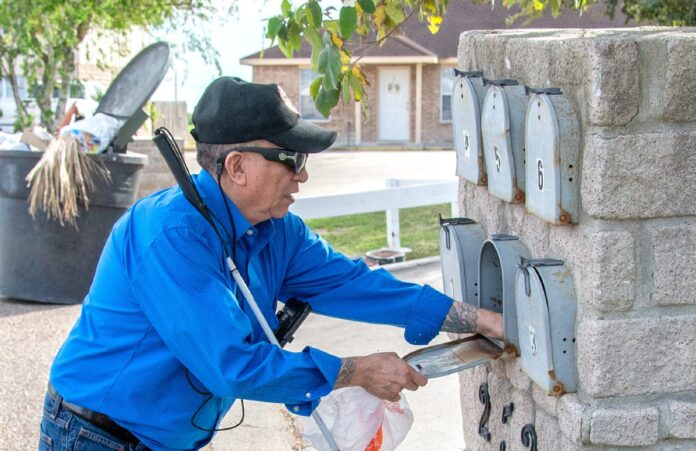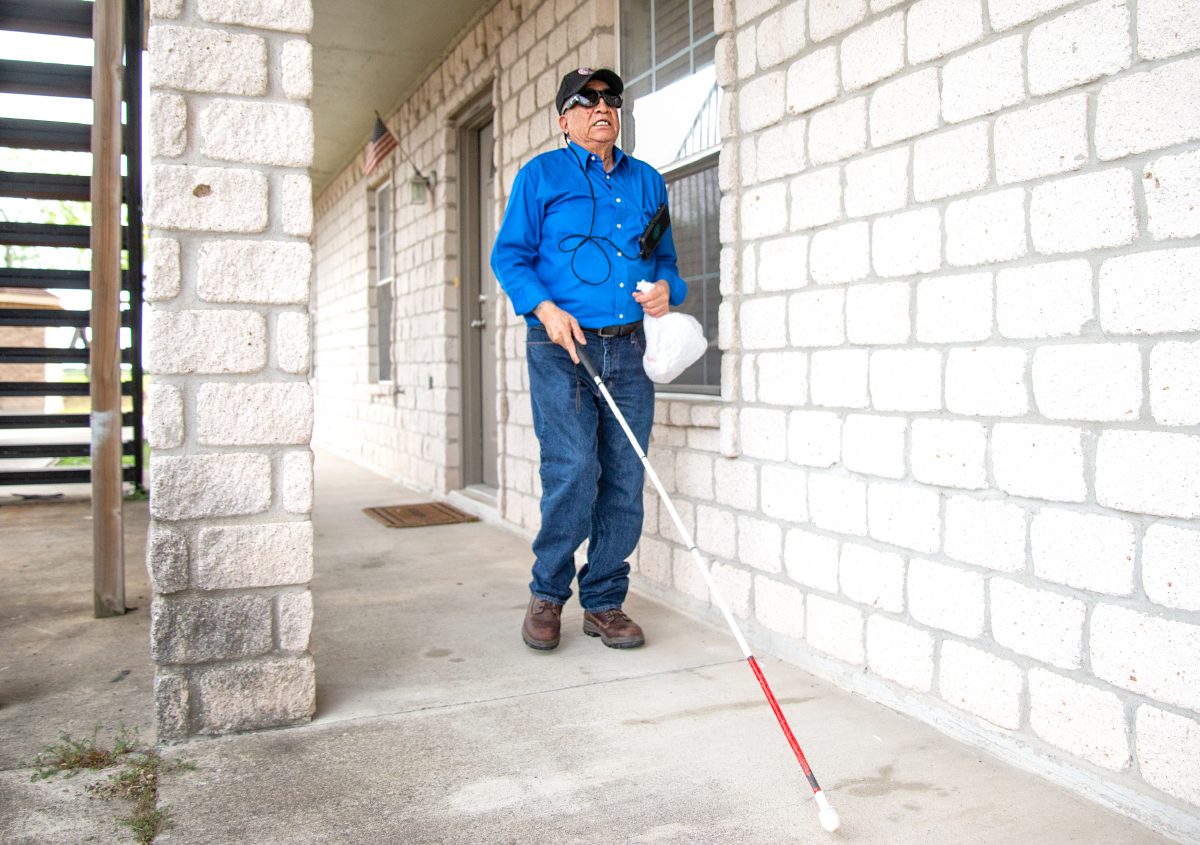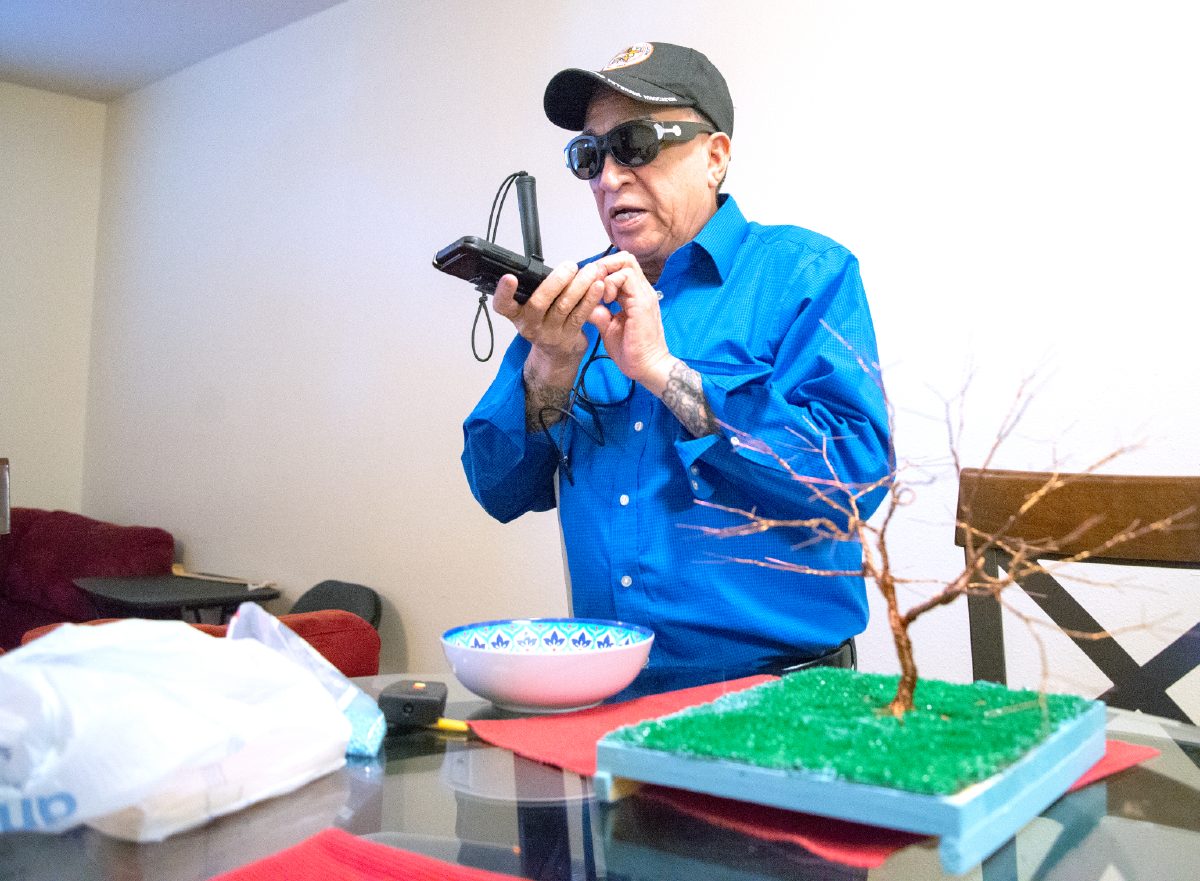
HARLINGEN — Benito Lopez can no longer see where he’s going, but he knows exactly where he’s going.
Someone in Florida, or California, or Colorado or North Carolina is looking out for him, thanks to a camera attached to his glasses.
It’s called the AIRA system (artificial intelligence remote assistance) and it has empowered Lopez, a Harlingen resident, to achieve more mobility after losing his eyesight to glaucoma several years ago. The Department of Veterans Affairs offers this and so many other services to veterans who have lost their eyesight.
“You’re maneuvering with your cane, you’ve got your glasses on and you’re walking,” said Lopez, 68. “You log in to AIRA, push the home button. It gives you the name of the agent that is going to come on. When they come on they will greet you. They will ask you what you want to do today.”
And what you want to do could be, well, just about anything. The agent becomes the seeing eye through the online camera, directing the veteran where to go for whatever he or she needs at the moment. This liberation, this independence of moment, is the goal of the VA.
Finding those services can sometimes intimidate veterans with their complexities, said Tommy Benavides, visual impairment services team coordinator. That’s why he works directly with veterans like Lopez to connect them with those services.
“Working with the VA can sometimes be a little scary,” Benavides said. “We’re a large agency and sometimes you don’t know which department to go to. It’s hard to navigate the system. I consider myself kind of like a bridge to all the different tools that might help them accomplish their goals. My job is to know what tools are out there and how to connect each individual vet with those tools.”
The hub for many of those tools are at the Blind Rehabilitation Unit in Waco, one of 13 such facilities run by the VA throughout the country. The unit in Waco is part of the expansive Doris Miller Department of Veterans Affairs Medical Center.
“There in Waco there are five areas of training,” Benavides said. “There are four that make up the basic program and then technology rounds it out. Everybody does the four basic and then folks that are interested in the technology will stick around a little bit longer.”
The four main basic areas are: visual skills, living skills, orientation and mobility, and manual skills. The visual skills address the needs of veterans who have lost partial eyesight.
“They try to take what remaining vision a veteran has and figure out a way to maximize it either through the use of magnifiers or maybe compensatory techniques using your side vision,” Benavides said.
Skills of daily living, he explained, includes learning how to cook again, how to clean, how to manage health matters such as diabetes and other aspects of day to day life.
And then …
“There’s O and M, orientation and mobility, which is the long white cane that Mr. Lopez has there,” he said.
Lopez took out a stick which he expertly unfolded into an impressive cane.
“O and M, it’s how to orient yourself in an unfamiliar area and then how to be mobile in that environment,” Benavides said.
Manual skills addresses a particular set of challenges.
“When you lose your sight you quickly learn that the world with all the doors and cabinet drawers is a cruel place for fingers sometimes,” Benavides said. “You tend to pull your hands in a little. You’re not as sure when doing manual tasks.”
Manual skills, therefore, seeks to give veterans some confidence in working with their hands. That’s how Lopez learned to make miniature trees out of copper and decorate them with beads, birds and butterflies.
The figures have become a welcome and familiar sight around the VA clinic in Harlingen, and it all started while taking classes in Waco.
“They told me to go in and feel right there on the table in front of you,” he said. “There were some wires, there were six pieces about 12 inches long, and they told me you have to unravel them. Every little piece had 19 little strings, you had to straighten them up.”
He first learned to make trunks by twisting the copper wire into shape, followed by the roots. And then, he took off on his own, acquiring materials for the wooden base from Hobby Lobby. And the birds and beads and other decorations, rich in color, were his invention.
So how did he get the colors right? Simple, someone on the other end of an AIRA transmission directed him.
While AIRA has blessed him with a new creative endeavor, its primary purpose of granting independence has also served him well. With an AIRA agent talking to him, he can step outside his home and wait for a cab. When it arrives, the agent will tell him so. Once he arrives at a store, perhaps Wal-Mart, the agent will direct him through what might have been an impossible task.
“They’ll guide you directly to the door,” he said. “If you want some detergent, they’ll log onto the website of the particular store and they’ll take you directly to that item. I want a can of beef stew. What brand? Get me Libby’s brand.”
And so it goes for Lopez throughout his days, guides illuminating his life, liberating his movements from the bonds of impairment.
For information about resources for veterans with visual impairments, call 956-291-9000 and ask for the eye clinic.







